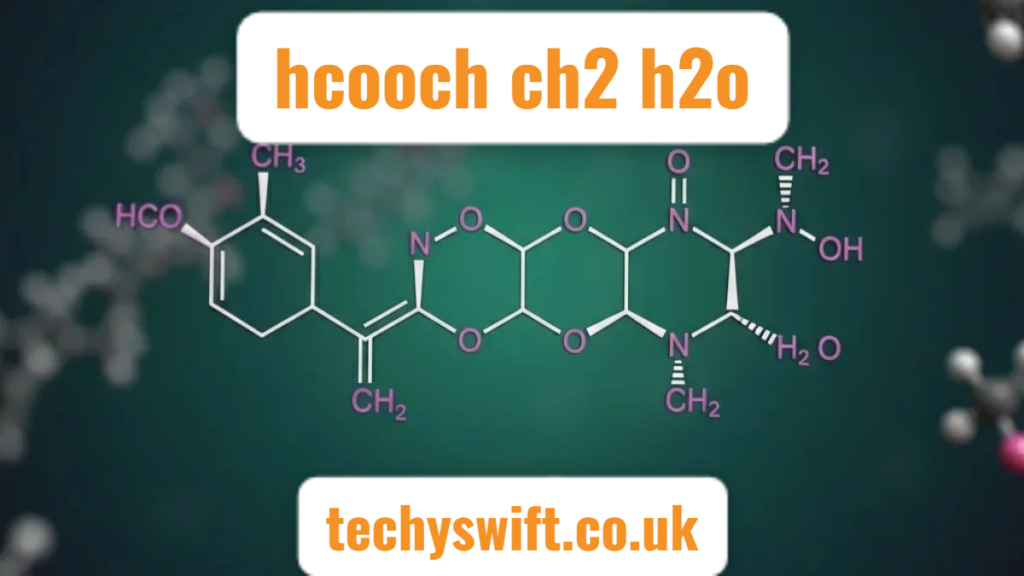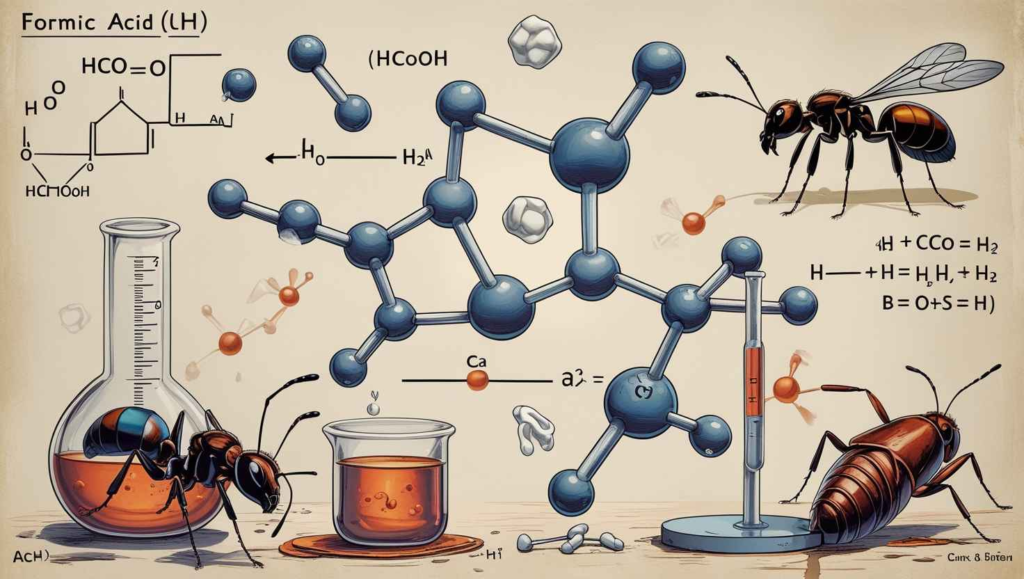
Introduction
The chemical interaction denoted by HCOOH CH₂ H₂O encompasses the hydrolysis of methyl formate, a reaction of significant industrial and environmental relevance. This process yields formic acid and methanol, both of which are pivotal in various sectors, including agriculture, pharmaceuticals, and energy. This article delves into the intricacies of this reaction, exploring its mechanisms, applications, and broader implications.
1. The Chemistry Behind HCOOH CH₂ H₂O

The reaction in focus is the hydrolysis of methyl formate (HCOOCH₃), where water (H₂O) interacts with the ester to produce formic acid (HCOOH) and methanol (CH₃OH). This transformation is a classic example of ester hydrolysis, a fundamental reaction in organic chemistry.
Reaction Equation:
HCOOCH₃ + H₂O → HCOOH + CH₃OH
This reaction is typically catalyzed by acids or bases, which facilitate the cleavage of the ester bond, leading to the formation of the corresponding acid and alcohol.
2. Mechanism of Ester Hydrolysis
Ester hydrolysis proceeds through a nucleophilic acyl substitution mechanism. In acidic conditions, the carbonyl oxygen of the ester is protonated, increasing the electrophilicity of the carbonyl carbon. Water, acting as a nucleophile, attacks this carbon, forming a tetrahedral intermediate. Subsequent proton transfers and bond rearrangements lead to the cleavage of the C–O bond, yielding the acid and alcohol.
Key Steps:
- Protonation of the ester carbonyl oxygen
- Nucleophilic attack by water
- Formation of a tetrahedral intermediate
- Proton transfers facilitating bond cleavage
- Release of formic acid and methanol
3. Industrial Significance
The hydrolysis of methyl formate is not merely a laboratory curiosity but a reaction of substantial industrial importance. The products, formic acid and methanol, are integral to various manufacturing processes.
Applications:
- Formic Acid:
- Used as a preservative and antibacterial agent in livestock feed
- Employed in leather tanning and textile dyeing
- Acts as a coagulant in rubber productio
- Serves as a solvent and antifreeze agent
- Used in the production of formaldehyde and acetic acid
- Acts as a fuel and fuel additive
- Used as a preservative and antibacterial agent in livestock feed
4. Environmental Considerations
The hydrolysis reaction aligns with green chemistry principles, emphasizing sustainability and minimal environmental impact. Using water as a reactant and producing biodegradable products like formic acid and methanol make this process environmentally friendly. Moreover, the reaction can be conducted under mild conditions, reducing energy consumption.ACS Learning
5. Safety Aspects
While the reaction itself is relatively safe, handling the reactants and products necessitates caution.
Safety Measures:
- Use appropriate personal protective equipment (PPE)
- Ensure proper ventilation in the working area
- Store chemicals in suitable containers away from incompatible substances
- Dispose of waste according to regulatory guidelines
6. Role in Organic Synthesis
The hydrolysis of esters like methyl formate is a fundamental reaction in organic synthesis. It provides a straightforward method to obtain carboxylic acids and alcohols, which are building blocks for more complex molecules. This reaction is also instrumental in the synthesis of pharmaceuticals, agrochemicals, and polymers
.7. Biochemical Relevance
In biological systems, ester hydrolysis is a common reaction, often catalyzed by enzymes known as esterases. These reactions are crucial in metabolic pathways, including the breakdown of fats and the activation of certain drugs. Understanding the hydrolysis of simple esters like methyl formate can provide insights into more complex biochemical processes.
8. Analytical Applications
The products of methyl formate hydrolysis, formic acid and methanol, are often analyzed using techniques like gas chromatography and high-performance liquid chromatography. These analyses are essential in quality control processes in various industries, ensuring the purity and concentration of chemical products.
9. Educational Importance
The hydrolysis of methyl formate serves as an excellent teaching example in chemistry education. It illustrates key concepts such as reaction mechanisms, equilibrium, catalysis, and the practical applications of organic reactions. Laboratory experiments involving this reaction can enhance students’ understanding of theoretical principles.
10. Future Perspectives

Research continues into optimizing the hydrolysis process for industrial applications. Developments include the use of novel catalysts to increase reaction efficiency and selectivity, as well as exploring alternative, more sustainable feedstocks for ester production. Advancements in this area contribute to the broader goals of sustainable and green chemistry.
Conclusion
The hydrolysis of methyl formate, represented by the interaction of HCOOH CH₂ H₂O, is a reaction of considerable importance across multiple domains. Its simplicity, efficiency, and alignment with environmental sustainability make it a valuable process in industrial chemistry. Understanding this reaction not only provides insights into fundamental chemical principles but also highlights the interconnectedness of chemistry with various aspects of modern life.
FAQs
Q1: What is the significance of methyl formate hydrolysis in industry?
A1: Methyl formate hydrolysis produces formic acid and methanol, both of which are essential chemicals used in various industries, including agriculture, pharmaceuticals, and manufacturing.
Q2: How does ester hydrolysis relate to green chemistry?
A2: Ester hydrolysis, such as that of methyl formate, often uses water as a reactant and produces biodegradable products, aligning with green chemistry principles that emphasize sustainability and minimal environmental impact.ACS Learning
Q3: What safety precautions are necessary when handling methyl formate and its hydrolysis products?
A3: Proper personal protective equipment should be used, including gloves and eye protection. Work should be conducted in a well-ventilated area, and chemicals should be stored and disposed of according to safety guidelines to prevent exposure and environmental contamination.



